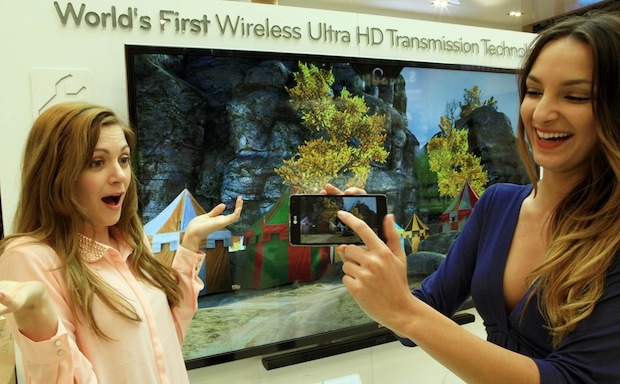Between HDTV, LED, LCD, Plasma, 3D TV, and Smart TV, many consumers may already be perplexed by the many different options of television units that are available on the market today and what each type of technology represents in terms of what it can do for the consumer. Adding to this confusion, the market has recently spawned a new term to look up in the form of “UHDTV”, or Ultra High Definition Television. While you probably already guessed that UHDTV is better than regular HDTV, let’s take a look at what exactly makes it better and whether you should even care about it or not.
To understand the difference between standard televisions, high definition televisions, and ultra high definition televisions, you’ll first need to learn some basics about how your television monitor works. While putting lighting options aside, which is the only difference between the leading television technologies, all monitors are made up of thousands of tiny pixels. Each pixel consists of three sub-pixels, which include one for red, blue, and green. Pictures are displayed by turning each of these tiny sub-pixels on or off and changing the intensity of each color by varying the amount of electricity each sub-pixel receives.
In a standard television, the monitor is 852 pixels long and 480 pixels wide, for a total of 408,960 pixels. This type of monitor is known as 480p. In a high definition television, the monitor is 1920 pixels wide and 1080 pixels long for a total of 2,073,600 pixels, or more than four times as many pixels as a standard-definition TV. This type of monitor is known as 1080p. In an ultra high definition television, the monitor is 3840 pixels long by 2160 pixels wide, for a total of 8,294,400 pixels, or more than four times as many pixels as 1080p. This type of monitor is known as 4k and is the next big thing in the television market.
While televisions can differ in sizes, the number of pixels they have remain the same. This means that larger televisions don’t produce as crisp an image as smaller televisions because they must stretch the same number of pixels across the monitor. This is where UHDTV technology comes in handy the most, because it means that larger television can now have just as sharp of an image as their smaller equivalents. Even if you don’t want a large television, however, you can still get a much better image out of a UHDTV (4k) television than a less advanced definition because its pixels will be pushed closer together, making colors and images stand out that much greater.
Since UHDTVs are the latest thing to hit the television market, they are expected to cost several thousand dollars, even for smaller units. Westinghouse has announced that they will be selling 50” televisions for $2,499, 55” sets for $3,000, and 65” sets for $3,995. LG and Samsung have proposed even larger units, such as an 84” set for $20,000. It is unclear how much units that are smaller than 50” will cost at this time, as UHDTVs haven’t actually been released to the public yet.



